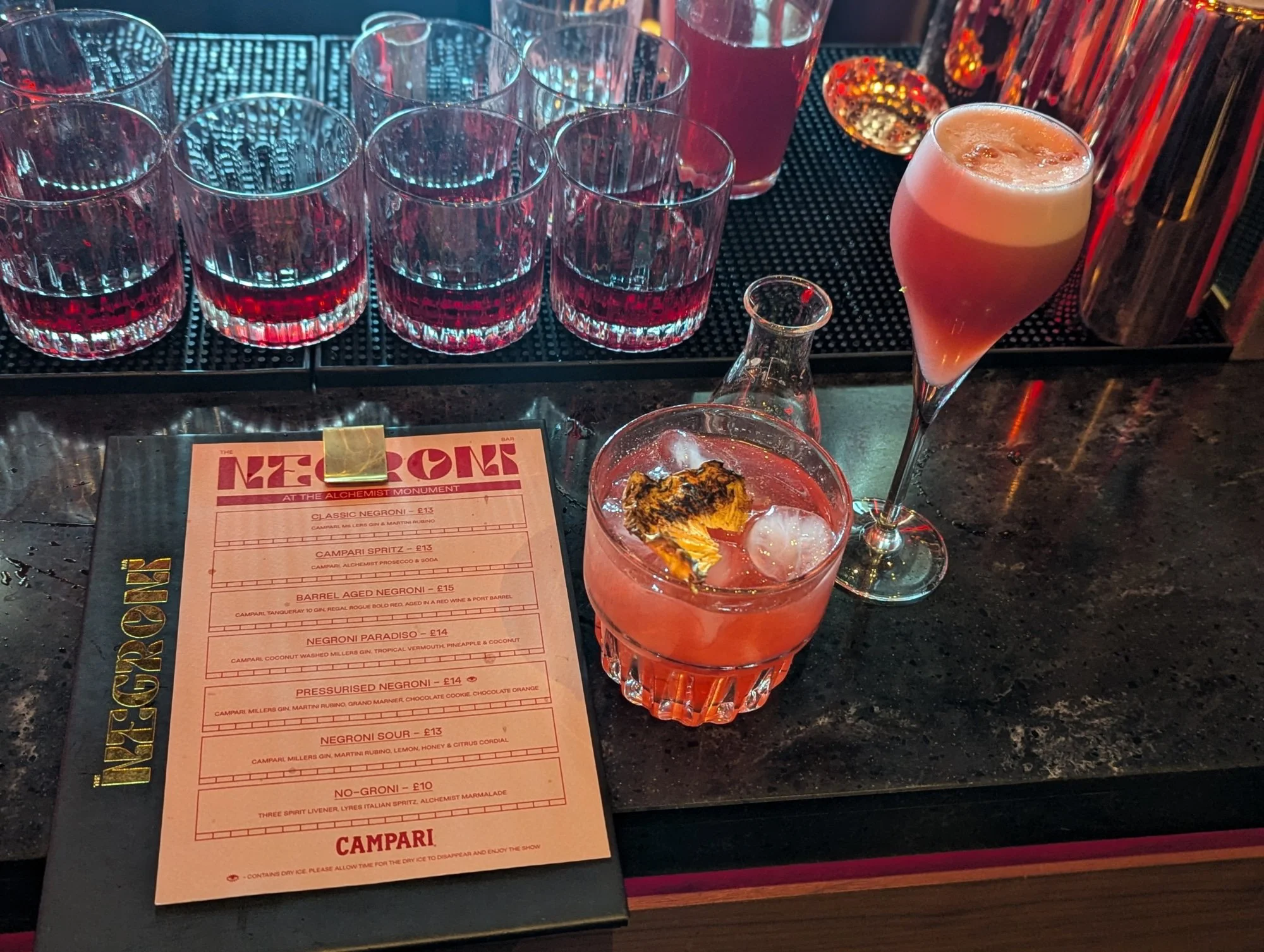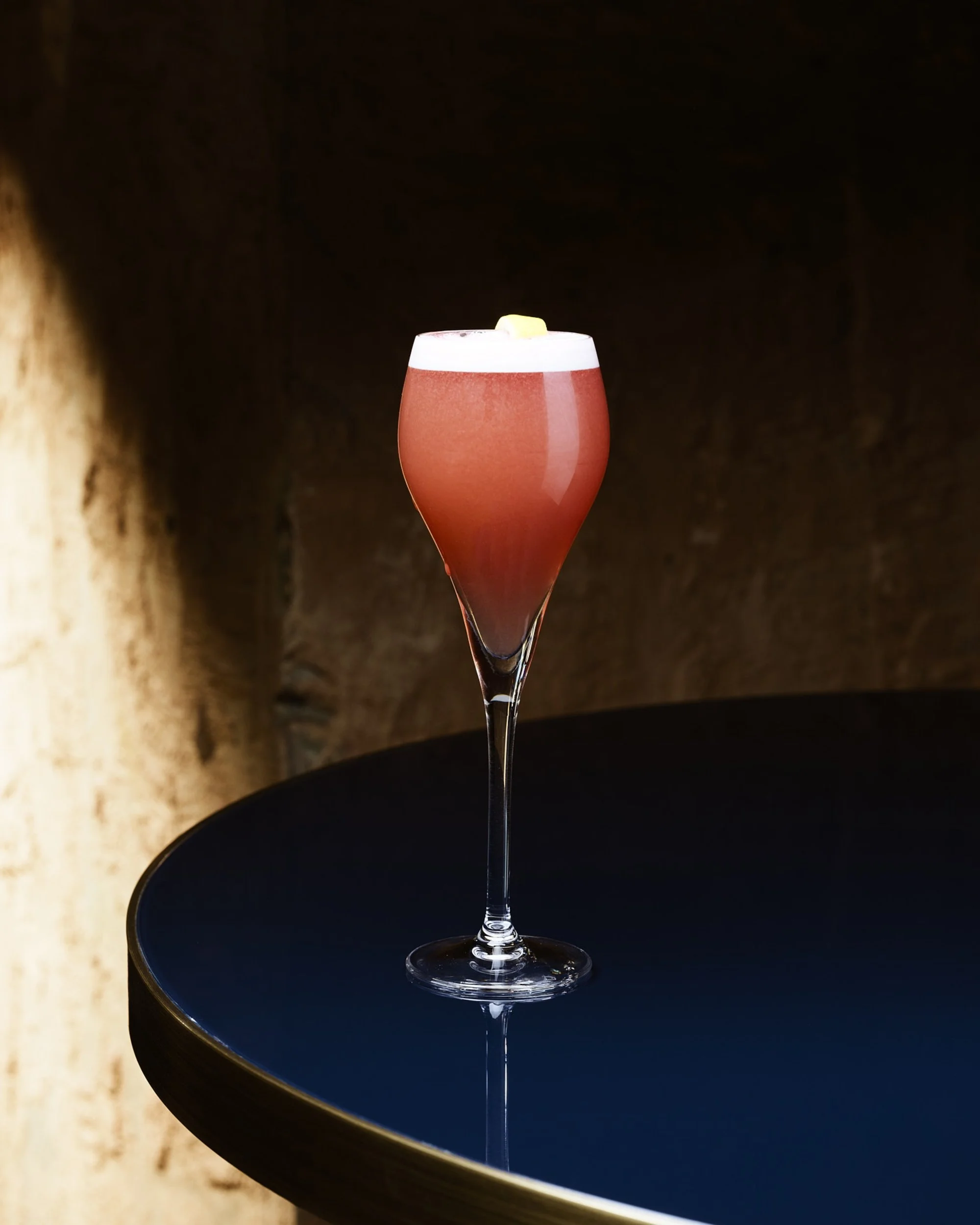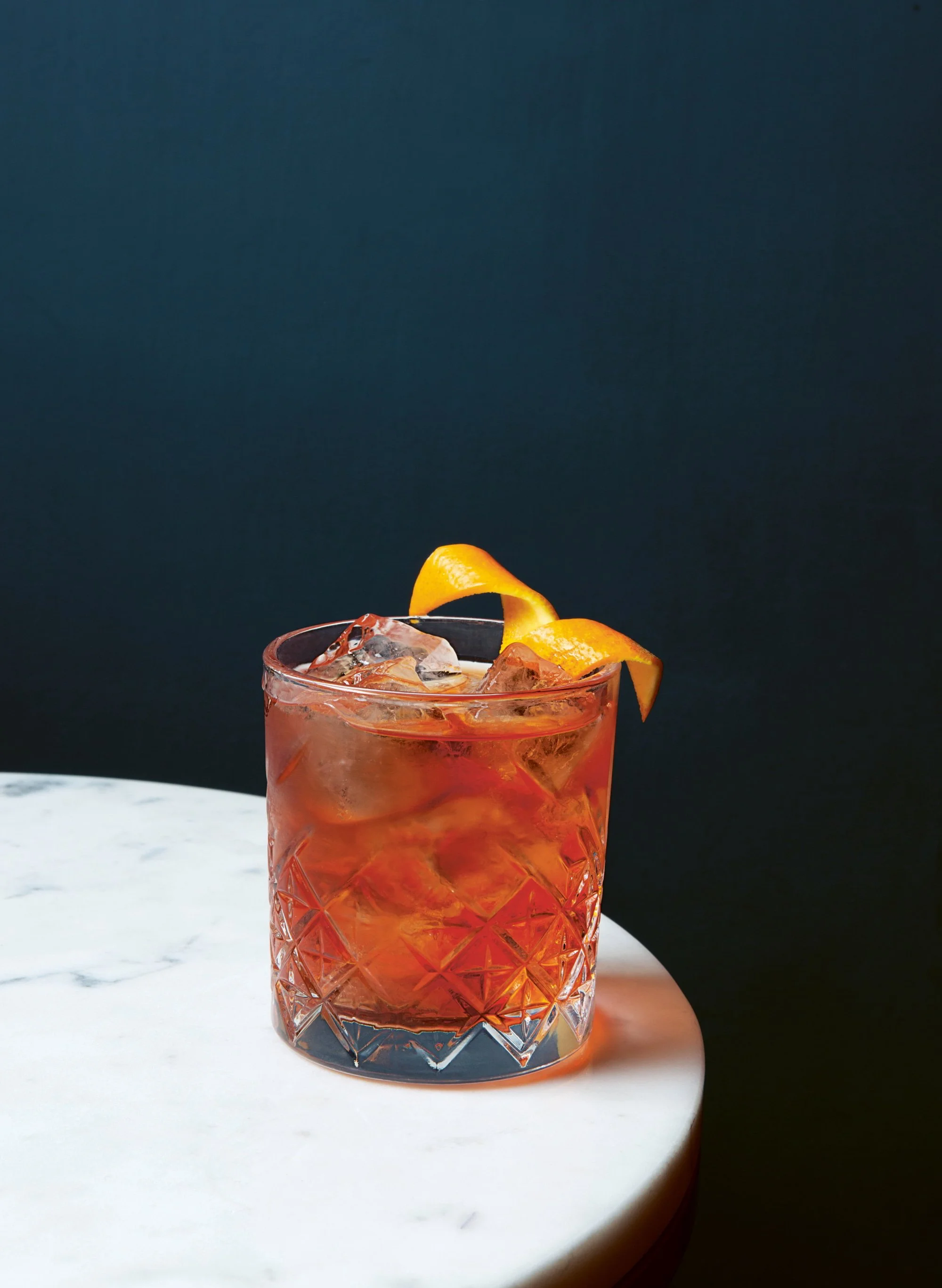Classic Cocktails in History: The Negroni
Negroni Bar photo credit Pamela Vachon
The Negroni would seem to represent all that most bar consumers aren’t leaning to of late, with its boozy, equal parts recipe and complex, bittersweet palate. And yet, the Negroni remains stubbornly on the list of the world’s top cocktails. “The Negroni is powerful in its simplicity as it delivers bitter, sweet and herbal notes that quite frankly are unmatched,” says Jonathan Fraser-Prinn, Head of Bars for The Alchemist, which operates The Negroni Bar by Campari in London. “I think people looking for ‘lighter’ drinks sometimes use that term for less caloric drinks as well, so strangely enough the Negroni lends itself quite well there, with no sugar or artificial sweeteners. It’s a triple threat of alcohol which delivers boozy yet clean flavors.”
I recently visited the newly-opened Negroni Bar, a space wholly dedicated to the cocktail, appropriately decked out in crimson neon and scarlet velour. Not only is the Negroni put center stage, every cocktail on the menu is a variation of the ruby sipper. Since it got me seeing red, I was curious to dive into the history of the Negroni, which turns out to be as complex (and bittersweet?) as the drink itself.
French or Italian, Nobility or Not
Milano Torino Credit Marisa Lynch and Meredith
As is typically the case with cocktails whose history begins at least a century ago, claims on the Negroni’s origin are multiple, and were mostly passed along as lore up to a certain point. Even when cocktail scholars thought to investigate various claims and commit them to any kind of print record, there’s no official consensus, and the actual origin of the Negroni remains murky. (Plus, speaking from experience, part of the fun of being a bartender is perpetuating cocktail lore, whether or not there’s accuracy in a given yarn.)
Given the prevalence of aperitivo or aperitif culture in both Italy and France, that the trio of gin, sweet vermouth, and a red bittersweet liqueur ended up in the same glass over ice could plausibly have origins in either place. (It’s like trying to trace the steps back to whomever first thought to put vodka and soda in the same highball glass for happy hour. Many could claim it. None could prove it.) A precursor to the Negroni, the Milano-Torino, was popular in northern Italy as early as the late 1800s, and the current iteration of the Negroni seems to begin around the 1920s, perhaps in Italy or in France, whether or not it was called Negroni at that point.
The name Negroni puts the cocktail squarely in Italy’s camp, at least insofar as it became something to call for by name, with the most commonly circulated story beginning in Florence around 1919. That legend goes that Count Camillo Negroni, (who may or may not actually be a count) asked for an amped-up Americano at the Caffè Casoni in Florence, replacing the requisite soda water with gin. Many drinks, from the Gibson to the Mary Pickford are named for the person who ordered them, not for the bar or bartender who created them, so this tracks.
The equal parts nature of the drink, however, when first put in writing, is attributed to a French cocktail book from 1929, which nonetheless calls for Campari by name, as well as specifically Italian vermouth. Somewhere in the decades that followed, the French recipe plus the Italian noble name got stirred together to become what we now know as the Negroni. Considering the French culinary system, the French were masters at codifying recipes and processes, so it’s also no surprise they should have a stake in Negroni’s official history.
Stubborn Popularity
One of the first mentions of the Negroni in modern-ish popular culture is from the Classic Hollywood era. In a 1947 letter from when he was working in Rome, Orson Welles said of the Negroni, “The bitters are excellent for your liver, the gin is bad for you. They balance each other.”
What I also found interesting about the Negroni is that it has maintained relatively steady popularity since its introduction. Perhaps there has been no such thing as a “Negroni craze” quite like what has happened with Aperol Spritzes, Espresso Martinis, and whatever the drink of summer has been in a given year, but the Negroni pops up as a consistent cocktail choice throughout various moments in cocktail history. (One could make an argument for the brief, Negroni Sbagliato virality of 2022, however.) From Classic Hollywood to 70s disco, to 80s technicolor, to arriving at a Negroni Week in the mid 2010s, the Negroni has stayed subtly in fashion, even as gin became less and less popular with American drinkers.
Negroni Variations
The Alchemist Campari Negroni Sour
Since the 1960s riffs on the Negroni — already a riff in its own right — started appearing, keeping the name Negroni intact within their improvisation. Such variations include the Prosecco-for-gin-swapped Negroni Sbagliato (in a seeming reversal of fortune, since it was the sparkling element of an Americano that was first chucked out to make a Negroni), and the White Negroni, which utilizes dry vermouth and Suze for a golden-hued effect. You can easily make these variations by applying the swaps to the standard recipe above.
Given the bedrock formula, the Negroni cocktail is ripe for even more experimentation, and, like the Espresso Martini, bartenders and home mixologists alike love to put a spin on it. The Negroni Bar features seven variations on a Negroni, including a tropical-inspired Negroni Paradiso, and a Negroni Sour. “The three parts composing the Negroni being equal certainly helps to simplify one’s approach to balancing a variation,” says Fraser-Prinn. “It’s this foundation which allows novices and pros alike to experiment from a solid base, and then modify a recipe as extreme or simplified as desired.”
Classic Negroni Recipe
Negroni photo credit Andy Sewell
1 oz (30 ml) dry gin
1 oz (30 ml) sweet vermouth
1 oz (30 ml) Campari
Sparkling water
Soda water, to top (optional)*
Garnish: orange twist or orange wheel
Add all ingredients to a rocks glass. Add ice (best with 2 large, clear cubes) and stir. Top with a splash of soda water (optional) and garnish with orange.
*Since Negronis evolved from the Americano, early recipes call for a splash of soda, though most modern serves omit it.
Excerpted from Signature Cocktails © 2023 by Amanda Schuster. Photography © 2023 by Andy Sewell. Reproduced by permission of Phaidon. All rights reserved.




